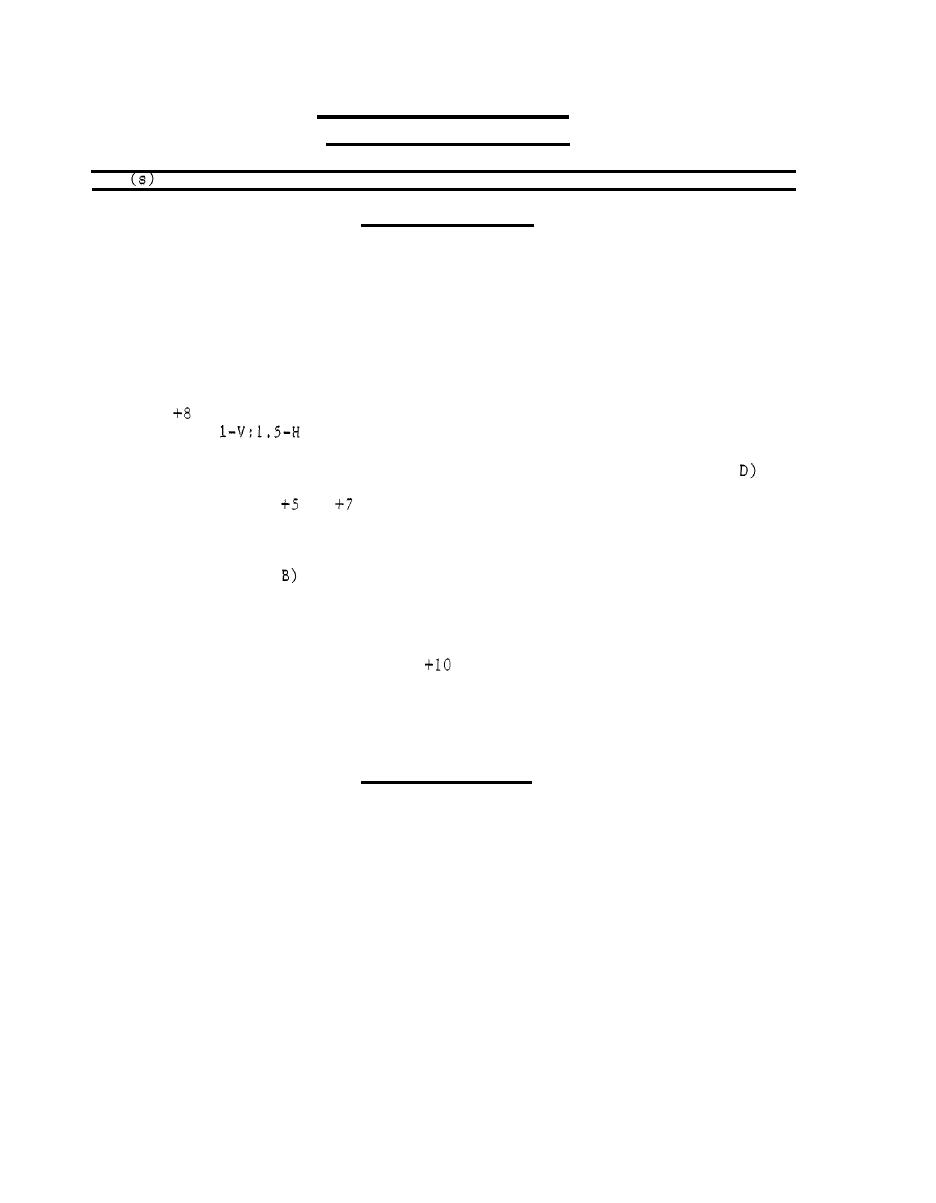
Table 13
Keweenaw Waterway Structures
Keweenaw Waterway, Michigan
Date
Construction and Rehabilitation History
North (Upper) Entry
1898-
A 2,385-ft-long east breakwater and a 2,645-ft-long west breakwater
1902
were constructed at the north entrance during this time (Figure 31,
Sections C and D. These structures were stone-filled timber crib
)
breakwaters. The shore wings were 20 ft wide, and the main break-
waters were 30 ft wide.
1917-
The main breakwaters (Figures 31 and 32, Section C) were capped with
1931
5-ton stone. Fifteen-ton stone was placed on the channel side of the
structure for stability of the cap. The el of the structure was
ft lwd. Rubble was placed on the lakeward side of the structure
on a
slope and capped with 10-ton stone.
1933
The inner wings of the breakwaters (Figures 31 and 32, Section
were capped with a stone fill and concrete. The el of the structures
ranged from
to
ft lwd. Rubble toe protection also was
installed.
1948-
Construction of the breakwater pierheads (Figures 31 and 32, Sec-
1949
tions A and
progressed during this period. The 50-ft-long east
pierhead was built with steel sheet piles and sand, and the outer
cover of the entire structure was built with concrete. The crest el
of the structure was +18 ft lwd. The west pierhead was 5 0 ft long
and constructed of concrete and steel sheet piles with a sand fill.
The el of the structure was
ft lwd.
1986
The breakwaters at the Upper Entry have undergone routine maintenance
and presently are in fair condition. Figure 33 is an aerial view of
the upper entrance to Keweenaw Waterway.
South (Lower) Entry
1860
Construction on the inner 950 ft of the breakwater was completed by
private interests (Figure 34, Section I- ). This structure was a
L
stone-filled timber crib breakwater. The width of the shoreward
325 ft of breakwater was 13 ft, and the remaining structure was 30 ft
wide to a point 912 ft from its origin. At this point, the structure
width changed to 24 ft.
1897-
The outer 2,764 ft of the breakwater was built by the United States
1900
during this period (Figure 34, Sections L- ). The breakwater was a
N
stone-filled timber crib structure with a 24-ft width, except for the
lakeward 1 0 ft which was 30 ft wide.
0
(Continued)
60



 Previous Page
Previous Page
